The following is a guest post by Ryan Call.
Most in the collector world are familiar with Mondo, a company that started out selling t-shirts (you can still visit www.mondotees.com and end up on the Mondo website) but made its biggest splash by pairing artists from the gig poster underground with high-profile film franchises from DC Comics, HBO, Marvel, Paramount Pictures, Sony, Universal Studios, Walt Disney Studios, and Warner Brothers as well as many independent filmmakers to create limited edition screen printed posters, most of which sell out in a matter of minutes. Since becoming a fixture at San Diego Comic-Con and eventually creating their own convention, Mondocon, the company has diversified into selling pins, toys, games, tiki mugs, and for the past decade, film soundtracks on vinyl.
To celebrate 10 years of slinging albums featuring some of the most famous movies in history alongside some underappreciated gems from the indie world, the company is releasing Mondo: The Art of Soundtracks, a stunning coffee table book that chronicles the myriad of releases over the years. The book recreates the gorgeous artwork made specifically for the vinyl releases by the same stable of artists who work for the company on the poster side, as well as the fun, surprisingly artistic colored vinyl of the records themselves.
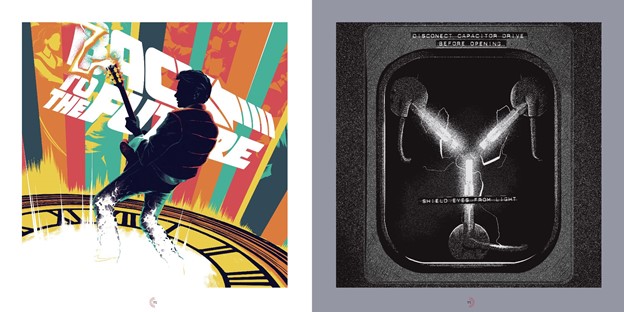
The watch word at Mondo is passion; in order for the company to take on an album project, somebody in the company needs to be its champion. Mo Shafeek, Co-Creative Director for Mondo Music and Death Waltz Recording Company, says of their approach:
“The last thing we’d want to be caught doing is being insincere or chasing a trend or not treating something with the reverence it deserves. If we don’t feel like we can dedicate the research period so that we can understand or that we’re not already passionate about it that we wouldn’t do it a disservice, and sometimes we say no to things because we don’t want to insult the core fanbase.”
Mo’s co-creative director and the founder of Death Waltz Recording Company Spencer Hickman echoed his sentiment:
“We do not work on things that one of us doesn’t absolutely love. One of us has to absolutely love it. Otherwise there’s no point. You have to be passionate about it or it will show in the finished product. I think we treat everything equally. I don’t know if that’s unique to us but it feels to me like that’s pretty unique. We will put as much love, effort, and time into, say Liquid Sky as we would into Blade Runner 2049 or Jurassic Park. For us, each project is as important as the next.”
The process of creating a soundtrack album of the type Mondo has been releasing for a decade is not as simple as calling up a studio and securing the rights to the music. Once Mondo decides to pursue a particular soundtrack for release, the process can sometimes take years. Shafeek talked about the rights issues that can arise when it comes to the music:
“You’d be surprised how complicated and how many studios don’t know who owns the rights to their soundtracks. It’s not a one-to-one thing. You’d think, “The Universal logo is on the front of this so Universal owns the rights to it.” Yeah, technically, but Universal is both a movie studio and a record label and you’d think that the Universal record label owns this but they only own parts 1 and 2 because, in the 80’s when the soundtrack boom went bust, they sold part 3 to an independent label in perpetuity so part 3 is inexplicably with that label, but then for part 4 they got it back and part 5 is currently sublicensed to these people. A good chunk of our job is finding out where a specific title is. The Halloween franchise is one of the funniest ones. They’ve been split up so many times. If you see a box set of those films, you have to understand what a pain in the ass it was to do. We’re doing Mission Impossible right now and the soundtrack rights are with five different companies.”
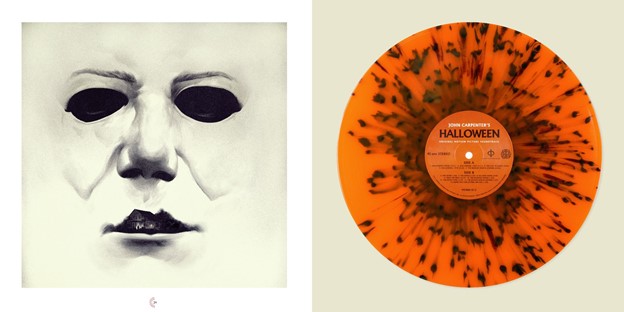
Sometimes the efforts of Hickman and Shafeek verge on the archeological. For instance, Hickman said about an upcoming release:
“I just licensed a really big horror title, something I’m really excited about, and when I asked for the audio masters, they said ‘oh, we don’t have them. When you track them down, could you send us a copy?’ So luckily I was introduced to the composer and he had the original masters.”
All of the complications that the poster side of Mondo experiences when it comes to getting art approvals are . Rights to actors’ likenesses are particularly sticky, said Shafeek:
“The funniest thing we’ve run into with regard to likeness rights came when we did Silence of the Lambs with Rich Kelly. Even though in the poster world they were able to do likeness for Hannibal Lector for Anthony Hopkins, when it came to the soundtrack there was a rule that any image of Anthony Hopkins had to be with Jodie Foster; they had equal parity. They had to both approve and both be on it. That sounds great, we’ll do an image that features both of them. And then they told us that Anthony Hopkins had said in the past that he will never approve another image of himself as Hannibal Lector ever again. So we said ‘ok, we’ll do Jodie Foster,’ but they said ‘nope, it needs to be both and one of them says forever no.’ And so we couldn’t do an image with either of them.”
That said, one of the secret weapons that both the poster and music sides of Mondo have in their arsenal is the stable of artists they’ve developed over the years. Those working relationships can help balance out the difficulties of projects that take years on other fronts to complete. Shafeek related that the process of creating their Adventure Time box set began in 2013 with initial overtures to Cartoon Network but wasn’t released until June of 2019. However, when it came to the art portion of the release created by Adventure Time comics artist and long-time Mondo artist JJ Harrison, the process was significantly easier:
“JJ is a wizard. He works on the comics and is in the family, so to speak. He’s an absolute legend and is so quick and easy to work with. I absolutely love JJ to death. He’s saved my ass so many times doing soundtrack artwork for little spot images here and there, he’s an absolute legend. But the artwork part came together very quickly, that part was easy. Usually it’s the other way around. Usually you get audio delivered to you on day one and then you figure out the artwork and that takes a full year because you have to chase down likeness rights or you have to figure out who has to approve things.”
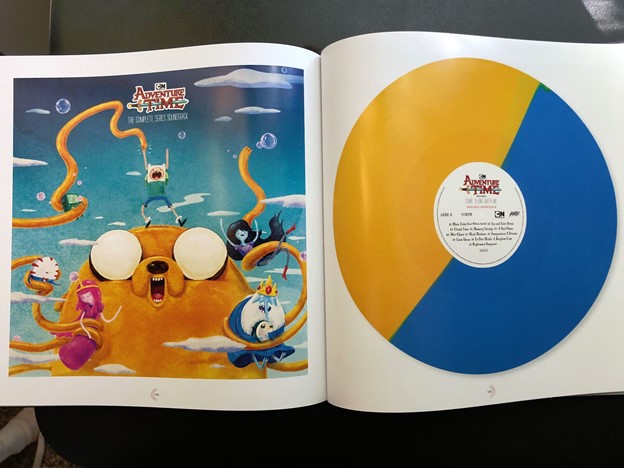
Even when art and music are sorted, the challenges extend all the way to the look of the album vinyl itself. Some of that vinyl features effects chosen to echo the colors and content of the cover art. Hickman said:
“The colors are just a fun extension. If you can tie them in, that’s amazing and we try to do it as much as possible and we’re always looking for new effects. The vinyl colors are super important.”
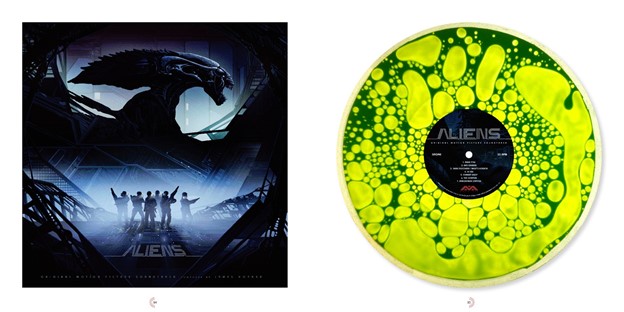
Creating the vinyl effects is not an exact science. Shafeek said:
“This is probably a poor analogy. But unless you’ve done it before, you don’t know how it’s going to turn out. Sometimes you say you’re going to combine X,Y, and Z effect and hope it works out and sometimes you’ll open the box and just be blown away. It’s like ordering a combination of pizza toppings you’ve never tried before and hoping that the flavor profile tastes good when you get it. There’s a bit of gambling involved.”
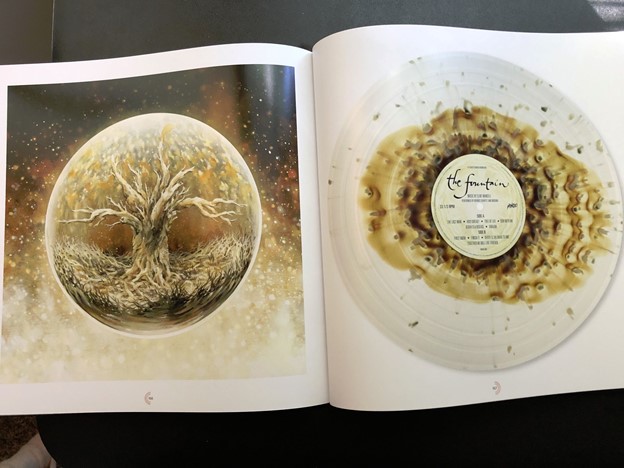
Although both the poster and vinyl sides of Mondo share similarities, the album releases provide an extended opportunity to represent the film in a more concrete way. Shafeek said:
“You tell a story with a record. You have four panels and you have an experiential nature. You don’t have that with a poster. A poster is flat, you hang it on the wall, it has its own ‘the medium is the message’ kind of vibe to it but a vinyl release is interactive. You can tell a narrative. One of the core tenets of Fight Club is that anti-consumerist satire of this specific time we’re in of mass consumer culture. When we got the rights to Fight Club, an album we truly love, we were immediately smacked in the face with the irony of selling product for Fight Club. That is the thing that is most misunderstood about that film. When we made the record, we were like “Okay, how do we express that we know what this movie is about while making that an experience that people have to live with so we came up with this idea of a package that is sealed, a vinyl record that arrives mint but that is sealed on all sides. There’s a glue flap that covers the opening that is typically open to access the record. In order to access the record, there is a tear strip like there is on a mailer, and you have to tear the entire record around, 360, to open up the record. So you have to decide whether you want to destroy it in order to access the contents of it. Once the brilliant Alan Hynes came up with that concept, we knew that we had something special, and that’s something you can’t do with a poster. You make a poster for Fight Club and it’s typically evocative of the story but with the record we were able to make the message of the film inherent in the experiential nature of holding the thing.”
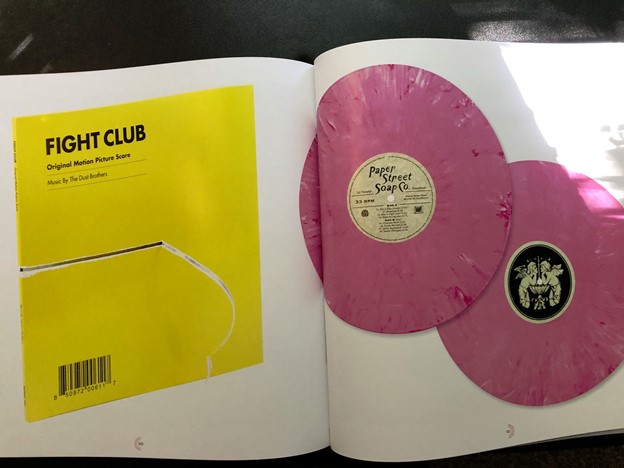
Mondo: The Art of the Soundtrack, presented by Insight Editions, goes on sale June 1. It features introductory words written by Shafeek and Hickman as well as composer powerhouse Michael Giacchino and film critic Todd Gilchrist. The 215-page book features large-format images of a selection of the past 10 years’ worth of all-original art including album covers, inside art, and images of some of the colorful vinyl itself.